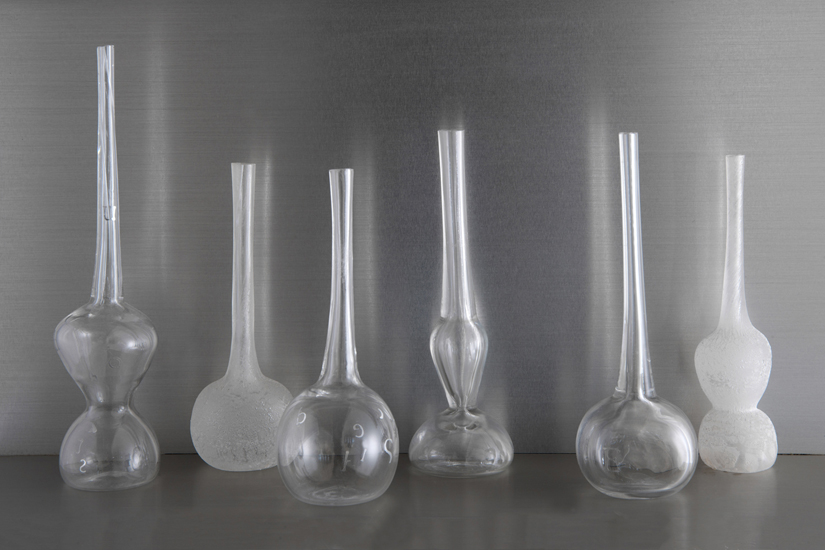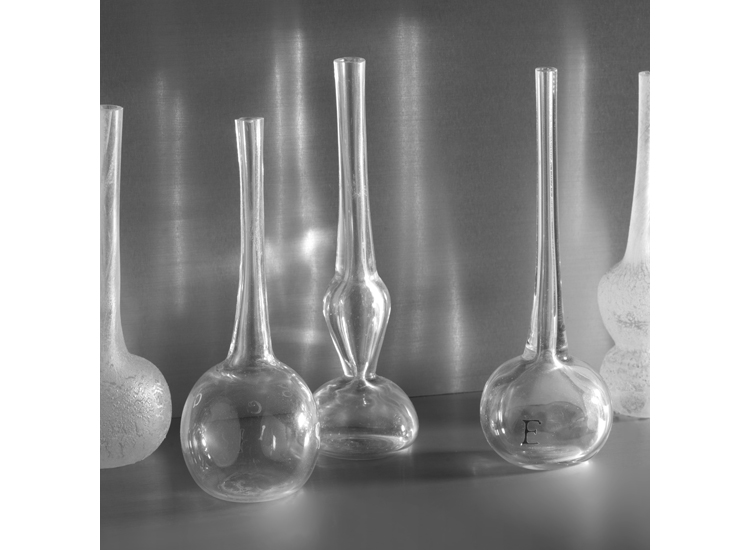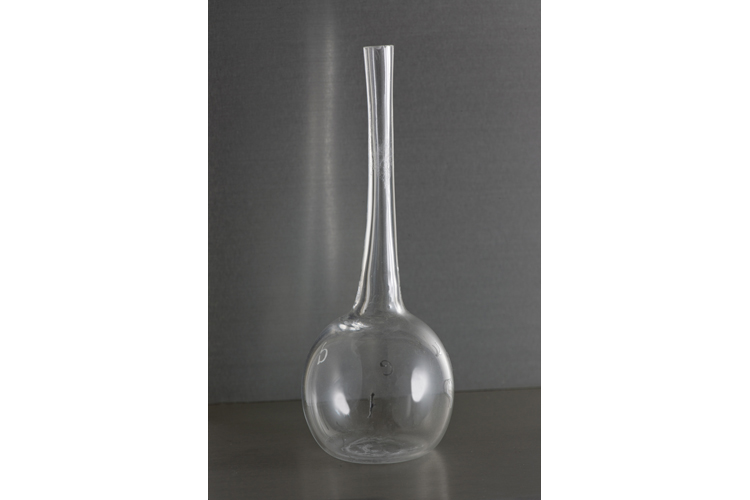Reliquary, 2012
Medium blown glass, anodized aluminum fabricated by Tom Oliphant
Dimensions 30 x 30 x 4 ½ inches
Weisman Art Museum
These glass bottles mimic the shape of vessels found at burial sites throughout the ancient Mediterranean world beginning around 50 BC, when the technique of glass blowing was invented. Today, they are sometimes called lachrymatories to reflect the myth that they were used to collect the tears of mourners in ancient Hellenistic Greek and early Roman funerary rituals. Scholars have dismissed this idea, pointing to residual evidence that their contents were not from the body and instead ranged from wine to powered incenses.
Because of their associations with funerary rites and burials, these globular glass bottles inspire assumptions of a relationship between sadness (physically manifested by tears) and death. In their empty state, Bart’s vessels leave us speculating about how their ancient models functioned. Were they offerings of precious substances from the living to the dead? Without resolving such questions, Bart leads our attention to a history that has been lost over time.
Publication:
Abracadabra and Other Forms of Protection, Laura Wertheim Joseph editor and curator, Weisman Art Museum
Exhibition:
Abracadabra and Other Forms of Protection / February 2 - November 29, 2020 / Weisman Art Museum, Minneapolis MN




